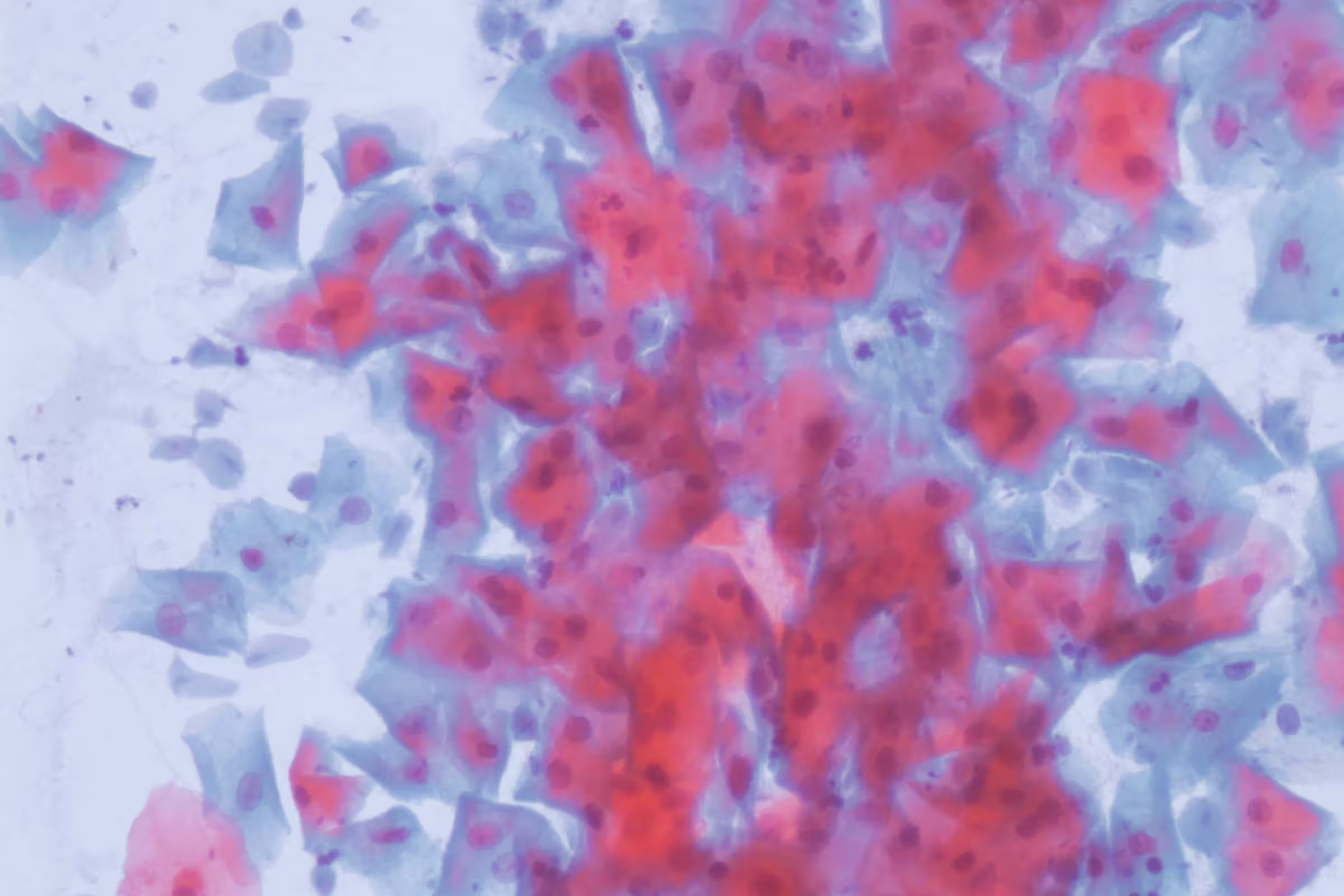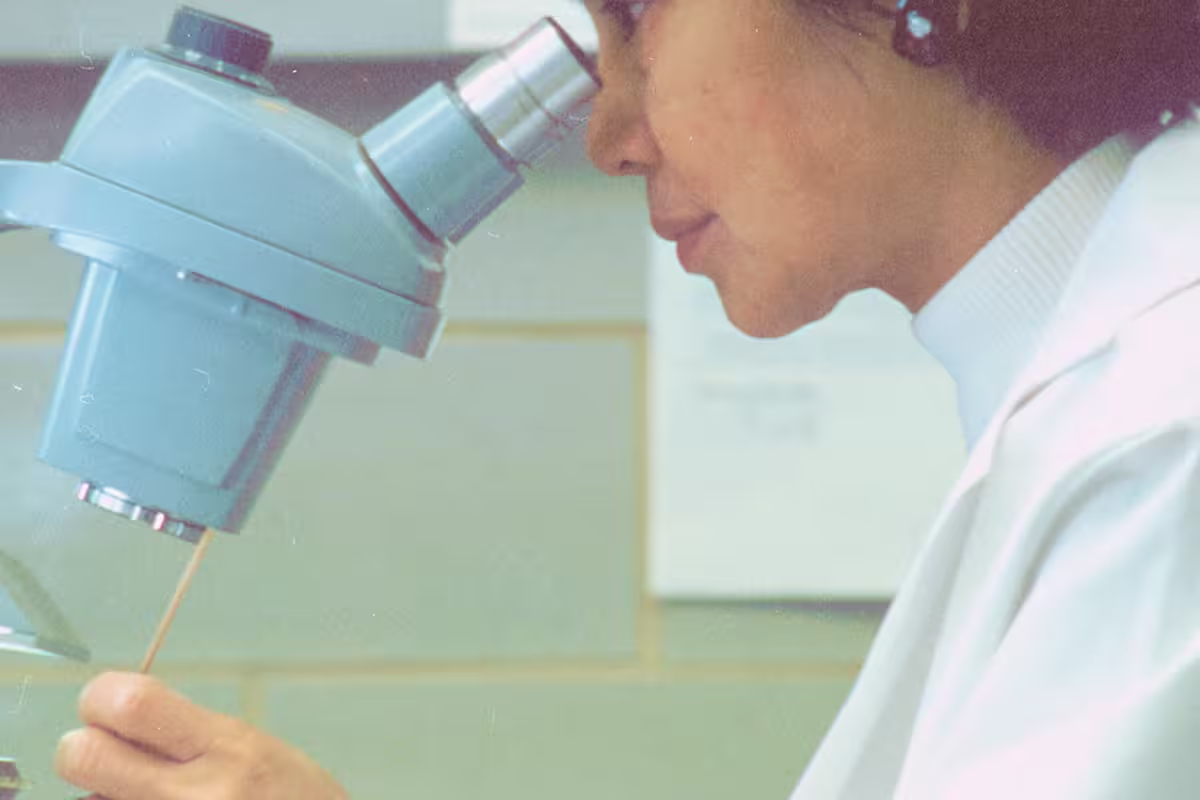

What Is Trichomoniasis? Symptoms and Treatment
Learn about causes, symptoms, and treatments for trichomoniasis.
Words by Olivia Cassano
Scientifically edited by Dr. Krystal Thomas-White, PhD
Medically reviewed by Dr. Kate Stewart, MD
Even if you're pretty clued-up about sexual health, there's a chance you may not have heard of trichomoniasis. What is trichomoniasis, you might be wondering.
Trichomoniasis, or "trich" for short, is a type of sexually transmitted infection (STI) caused by a parasite. It's very common, and most people with trich don't experience any symptoms.
While trichomoniasis might not be as well-known as other sexually transmitted infections like human immunodeficiency virus (HIV), gonorrhea, or chlamydia, it's actually estimated to be the most common non-viral STI in the U.S. The Centers for Disease Control and Prevention (CDC) reports that 2.6 million sexually active people in the U.S. test positive for trichomoniasis, most of whom are women.
And yet, trichomoniasis isn’t a reportable disease, which means that health departments are required to report it, so it can be challenging for public health programs to keep track of it and manage it effectively.
However, like with all sexually transmitted infections, awareness is key — especially if you're sexually active. Below, we give you the lowdown on the symptoms, causes, and treatments for trichomoniasis.
What are the symptoms of trichomoniasis?
Trichomoniasis can be tricky because it often doesn't show symptoms, meaning people may not even realize they have the infection. Around 70% of those with trichomoniasis don't experience any signs or symptoms at all, according to the CDC.
However, when symptoms do show up, the most common one is vaginitis (irritation in the vulva or vagina) and abnormal vaginal discharge. Trichomoniasis has an incubation period of around 5 to 28 days, according to the CDC — but it might take way longer for symptoms to show up.
Some common signs and symptoms of trichomoniasis include:
- itching or irritation inside and/or around your vulva and vagina
- green, grey, frothy, and/or thin discharge that has a foul or fishy smell
- pain or burning when peeing
- the frequent need to pee
- spotting or bleeding between periods
- pain during sex.
Keep in mind that other sexually transmitted infections or vaginal infections can cause similar symptoms, so if you're experiencing symptoms that you think might be trichomoniasis, it's important to get tested to get a proper diagnosis and exclude any other infection.
.jpg)
What does trichomoniasis smell like
Unusual and foul-smelling discharge is a dead giveaway that something’s up down there, and it’s one of the most common signs of trich. Trichomoniasis discharge usually has a strong, unpleasant, and sometimes fishy smell. It’s worth noting, however, that other infections can cause foul-smelling discharge so that alone isn’t enough to diagnose trich.
Trichomoniasis vs BV
Although trichomoniasis and bacterial vaginosis (BV) can cause similar symptoms — like unusual, foul-smelling discharge — and are treated with an antibiotic called metronidazole, they're different infections.
BV happens when there's an overgrowth of "bad" bacteria (typically Gardnerella vaginalis) in your vaginal microbiome, while a parasite causes trichomoniasis. More importantly, trichomoniasis is a sexually transmitted infection, while BV isn't.
What is trichomoniasis caused by?
Unlike other common STIs, trichomoniasis isn't caused by bacteria or a virus. It's caused by a parasite called Trichomonas vaginalis (TV), a single-celled organism known as a protozoan parasite.
Trichomoniasis can spread through sexual contact and bodily fluids such as semen and vaginal fluid. So, if you want to prevent trichomoniasis, use a condom or dental dam.
Trich tends to thrive in moist environments like the urethra, vagina, and vulva, which means women have an increased risk of contracting it. The pH of the vaginal microbiome also helps TV to grow.

Recurrent symptoms? Get Evvy's at-home vaginal microbiome test, designed by leading OB-GYNs.
Can men get trichomoniasis?
Anyone who is sexually active can get trich, but men and people with a penis are less likely to get trichomoniasis — or show symptoms. When they do get trichomoniasis, the infection is usually just in the urethra.
Symptoms of trich in men include:
- discharge from the penis
- pain or burning when peeing
- the frequent need to pee.
How to test for trichomoniasis
If you have a vagina, it's pretty easy to get tested for trichomoniasis with a simple vaginal swab. Even if you don't have any symptoms, it's always a good idea to regularly include trichomoniasis testing in your STI screening routine.
However, remember that trichomoniasis tests are not typically part of every STI panel, so you may have to request it specifically. Alternatively, you can also do an at-home test for trichomoniasis, such as Evvy's Expanded PCR Panel and Vaginal Health Test, by taking the sample yourself and sending it to a lab for analysis.
How is trichomoniasis treated?
If your trichomoniasis test comes back positive, your healthcare provider will prescribe a simple oral antibiotic to treat the infection.
Two common medications can be used: metronidazole, which is usually provided in a single dose, and tinidazole, which is generally taken in a lower dose twice a day for seven days. It’s important to complete the entire course of treatment!
It's worth noting that your sex partners will also have to get treated for trichomoniasis, even if they don't have any symptoms. People with a penis rarely have any symptoms of trichomoniasis, but that doesn't mean they don't have the infection. And if they don't get treated, they might spread trich back to you or other sex partners.
Reasons why trichomoniasis won't go away
Trichomoniasis is easily treatable, but like many infections, it has a nasty habit of being stubborn. There are a few reasons why trichomoniasis won’t go away:
- You didn’t take the whole course of antibiotics. Remember always to finish your medication even if you start feeling better or symptoms go away.
- You were misdiagnosed or prescribed an inadequate dose of antibiotics.
- You had sexual contact with your partner(s) before the infection was fully treated.
- You developed antibiotic resistance while taking antibiotics.
- Your partner wasn’t treated for trichomoniasis.
- Treatment was successful, but the trichomoniasis came back. Reinfection happens in about 1 in 5 people within three months of treatment.
What happens if trichomoniasis is left untreated
It's really important to treat any STIs you may have because they can cause serious health problems when they go unchecked. Trichomoniasis, in particular, can cause inflammation in your genital area and increase the risk of getting other STDs, like human immunodeficiency virus (HIV).
Trichomoniasis can be especially dangerous to pregnant women. Although it's rare, if you're pregnant and have trichomoniasis, it could lead to preterm delivery or a low birth weight. So, if you're pregnant and experiencing symptoms of trichomoniasis, it's really important to talk to your doctor right away.
Untreated trichomoniasis can also cause cervicitis, which is inflammation of the cervix for people with vaginas. Symptoms of cervicitis may include bleeding between periods, pain during or after sex, and abnormal discharge.
The good news is that, unlike STIs like chlamydia and gonorrhea, trichomoniasis can't travel up from the lower genital tract into your uterus and ovaries, which means it can’t cause pelvic inflammatory disease (PID).
FAQs
What are 5 symptoms of trichomoniasis?
Trichomoniasis can often go unnoticed because most people won't develop symptoms. When it does cause symptoms, the most common ones are frothy and foul-smelling vaginal discharge, vulvar pain, itchiness, and painful intercourse. In men, trichomoniasis causes penile discharge and a frequent need to pee.
What causes trichomoniasis in females?
The cause of trichomoniasis is the same for men and women. Trichomoniasis is caused by a tiny parasite called Trichomonas vaginalis. The parasite spreads through semen or vaginal fluids during sexual contact, including vaginal sex, oral sex, or anal sex.
Is trichomoniasis an STD?
Yes. STD stands for “sexually transmitted diseases,” and STI stands for “sexually transmitted infection.” Both STDs and STIs are infections that can be passed from one person to another through sexual contact, such as trichomoniasis.
Is trichomoniasis easy to cure?
Yes, trichomoniasis is the most common curable STD in the U.S. It can be easily treated with a round of antibiotics. Two common medications that are used for treatment are metronidazole, which is usually provided in a single dose, and tinidazole, which is generally taken in a lower dose twice a day for seven days.





